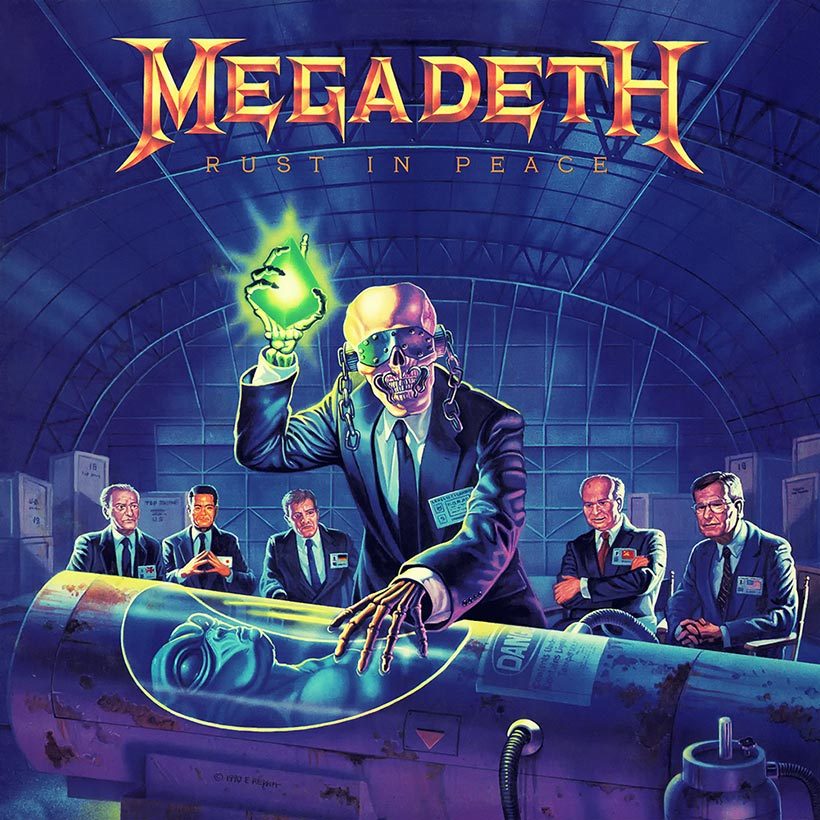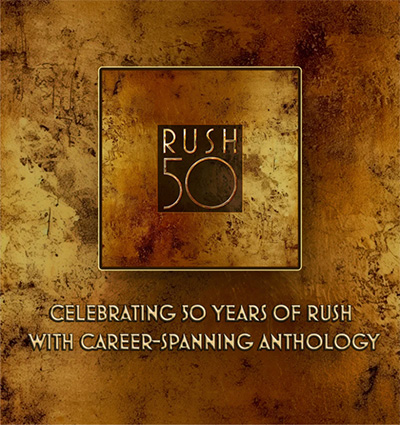‘Rust In Peace’: In Memory Of Megadeth’s Heavy Metal Rebirth
With their classic line-up in place, Megadeth unleashed one of the greatest thrash metal albums of all time.

Rust In Peace marked the dawn of a new era for Megadeth – one that could have reshaped metal as we know it. Coming off the back of one of the many line-up changes that have defined different stages of the band’s career, it saw the first appearance on a Megadeth record of both drummer Nick Menza (who’d been brought in on the So Far, So Good… So What! touring cycle, replacing the departed Chuck Behler) and guitarist Marty Friedman, who took Jeff Young’s place in the band. With longstanding bassist Dave Ellefson completing the quartet, the “classic” 1989-98 line-up of the band was in place.
“We’d hang out and come up with major heavy riffs”
Early contenders for Young’s spot had included Slash, who had enjoyed productive jamming sessions with Mustaine and Ellefson before Guns N’ Roses’ Appetite For Destruction took off. As Slash described in his autobiography: “We’d hang out… and come up with major heavy metal riffs, just f__king dark and heavy as hell.” Ultimately, however, he didn’t have the heart to leave GNR. Pantera’s Dimebag Darrell, too, was offered the job, but he came as a package deal with his brother, drummer Vinnie Paul, and Mustaine remained loyal to newly recruited Menza. They eventually found Marty Friedman on the recommendation of their management company.
The band ran into further difficulties when Mustaine crashed his car into a stationary vehicle that happened to be occupied by an off-duty cop. He was sentenced to drug rehabilitation when a court found him guilty of DUI and possession of narcotics. But the incident turned into a blessing in disguise. With Mustaine sober for the first time in a decade, the Rust In Peace sessions made for a more harmonious recording experience. Indeed, producer Mike Clink oversaw production duties for the entire recording process, the first time in Megadeth’s history they hadn’t switched producer mid-album.
One of the greatest thrash metal albums of all time
The resulting album is today held up as one of the greatest thrash metal records of all time. It took all the best elements of previous Megadeth albums and pushed them to their limits. Out of the stall, “Holy Wars… The Punishment Due” rampages on a galloping riff, referencing religious wars, in particular an incident in Ireland where Mustaine and co were escorted from a venue after the frontman inadvertently triggered a stand-off between Catholic and Protestant fans (“Fools like me who cross the sea and come to foreign lands ask the sheep for their beliefs/Do you kill on God’s command?”). “Hangar 18” – a song about UFO conspiracies – showcases a more refined style of songwriting while losing none of its heaviness, perhaps redolent of the direction Megadeth would take in later years.
War themes continue on the breakneck “Take No Prisoners,” while the band’s flair for unconventional song structures is employed on “Five Magics,” which is built on a two-minute instrumental intro. Perhaps through Mustaine’s newfound sobriety, there’s a precision-sharp clarity to the likes of “Lucretia” and “Tornado Of Souls” that eluded earlier work. That the stripped-down “Dawn Patrol” and thundering “Rust In Peace… Polaris” offer Ellefson and Menza a platform to exhibit their skills, with Friedman’s ripping solos throughout, perhaps demonstrates why the Rust In Peace incarnation of Megadeth came to be regarded as its definitive line-up.
With Rust In Peace, Megadeth cemented themselves as one of the most technically proficient and progressively complex bands in metal. The singles “Holy Wars… The Punishment Due” and “Hangar 18” helped propel the album to No.23 on the Billboard 200 and No.8 in the UK charts on its release, on September 24, 1990. It earned Megadeth a Grammy nomination in 1991 for Best Metal Performance, with the album eventually going platinum in December 1994.












